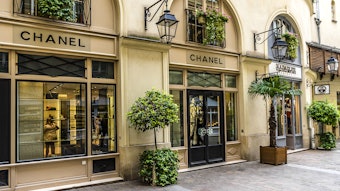Once thought to be recession-proof, the beauty industry showed its vulnerability during the 2008–2009 economic downturn, and fragrance sales were especially hard hit. Pricey fragrance products posted sales declines, though consumers—longing to buoy their spirits in a doom-and-gloom recession—sought alternative products to keep their fragrance fix going. Body lotions, refresher sprays and shower gels continued to hold their own, yet many fragrance launches planned for 2009 were shelved until some light at the end of the tunnel began to show for the fine fragrance sector. In the meantime, a return to nature and new plant materials with a bent toward holistic therapy has provided new avenues to explore for scents.
Consumers are looking for value and an economical luxurious way to lift their mood. They seek comfort as well as something new and creative. At the same time, brands and fragrances must provide quality and value.
New Ways to Lift Spirits Via Fragranced Products
Consumers in this fast-paced and ever-changing society always want something new to entice and titillate them. In addition to the impact of consumer cutbacks in spending, fine fragrance sales have declined because functional products such as a moisturizing body creams and shower gels—as well as body splashes—are also exhilarating the senses. Skin care and antiaging products are at the forefront of this shift, taking share from fine fragrance.
Further, major fine fragrance launches have declined because of prohibitive introduction costs. Ancillary products are the new vehicles in which to experience fragrance, and the quest for something different or new will be the driving force for creating more sales. Believable benefits—such as moisturizing from avocado oil and the antioxidant nature of cranberries—will encourage people to buy at the counter.
The major brand owners have recently flooded mass market shelves with creatively fragranced functional products, and have elevated their lines by offering some glamor in the fragrance. Unilever’s Dove body products, for example, have been energized with the addition of both familiar and exotic-sounding botanicals—such grapefruit, lemongrass citrus hesperidic and fruity florals. Suave products have been interjected with interesting new scents, complemented and reinforced with more upscale packaging.
Aromatherapy and Essential Oils
Aromatherapy remains somewhat elusive. Essential oils have always been associated with their therapeutic effects, as well as their fragrancing abilities, and certain notes are assigned as having positive or negative effects in our memory banks. Scent, too, triggers emotions, and this can be positive or negative. For instance, spices such as pepper, rosemary, basil or nutmeg can be exhilarating; lavender can soothe and calm; and cinnamon and clove can excite and stimulate memory. As these ingredients become even more familiar tools in marketing products, they will also be tapped for their fragrance benefits.
Consumers seek comfort in familiarity with ingredients that provide both nutritional benefits and a familiar fragrance theme—food notes and spices are comforting. They are a feel-good, back-to-basics psychological reinforcement. To capitalize, the giants have—in addition to giving beauty products more of a fashion twist with creative fragrancing—leveraged trendy botanical and holistic ingredients to market products.
Lower Cost Options Attract Consumers
Private label and no-alcohol base products are lower-cost options that have made inroads in attracting consumers, and reinforced the notion that consumers still want a fragrance experience. Sears’ Time Out private label line, for example, is a vehicle for delivering fragranced products in bath and body formulations, as well as low-alcohol sprays.
Refresher sprays and body mists have become very popular products for spraying fragrance at low levels to deliver the vicarious scent experience, and at a very reasonable price. Splashes and body sprays have also become great selling products that deliver the fragrance experience at a lower price, and specialty stores such as Ulta and Sephora have developed product lines to lure the consumer with quality fragrance. In many cases, these are very similar to upscale lines, but at a dollar amount more likely to resonate with price-conscious consumers.
As the market becomes more competitive for consumer dollars, only products that deliver good value and performance will remain. And the ever-evolving art of fragrance—and a fresh and expanded approach to scent—will be key in enticing today’s consumers.
Nancy C. Hayden is a chemist and a pharmacist with more than 30 years in the fragrance industry. She worked as a nose for Jovan from the company’s beginnings and as fragrance director for Jovan Beecham until 1988. Currently, she is a consultant to the fragrance and cosmetics industries.










